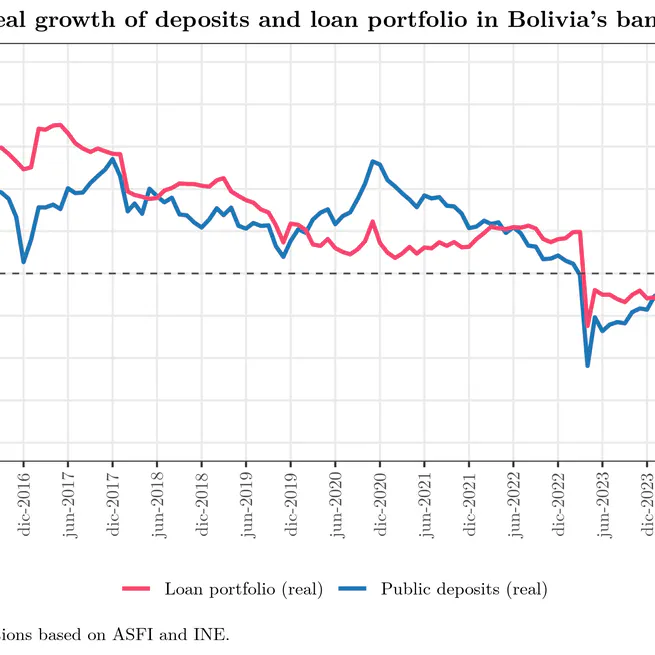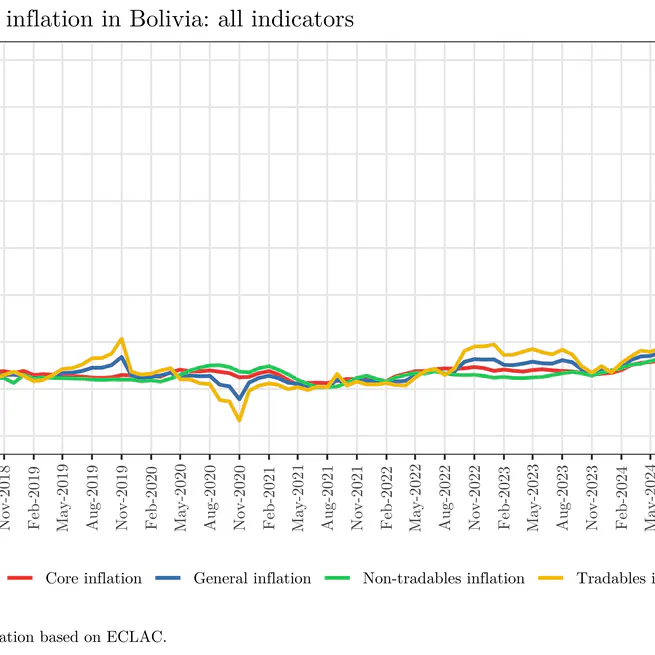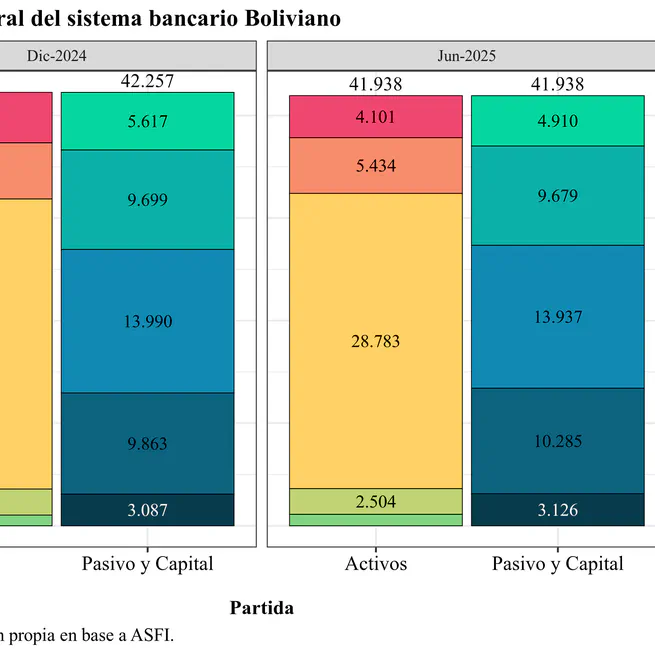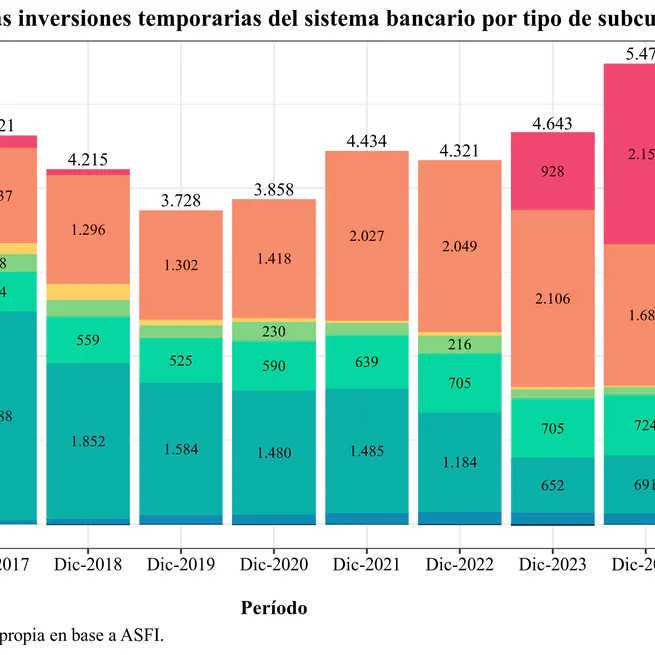
As of September 2025, the Bolivian banking system is operating in a defensive mode amid a fragile macroeconomic environment: the balance sheet expanded by +3.6% in nominal terms (≈ USD 1.479 billion at the official exchange rate), but credit and deposits contracted in real terms. Growth is concentrated in short-term liquid assets —cash and temporary investments— with greater exposure to the BCB and a rebound in account 124 (TGN), while loan portfolio growth has slowed. Funding has become more volatile, with a declining share of time deposits and increased reliance on savings and current accounts, in a context of USD scarcity and a “dual” exchange market. Asset quality remains under strain due to the reprogrammed portfolio (~15%), the main driver of non-performing loans. Despite a positive and recovering ROE, margins are under pressure (regulated lending rates and the need to raise deposit rates), reflecting reduced financial intermediation and growing dependence on the BCB for liquidity management.
Oct 30, 2025

This article explores data extraction from ECLAC and its application to the analysis of inflation in Bolivia, using the R programming language to access relevant economic data. As of August 2025, Bolivia’s year-on-year inflation ranges from 16.05% (non-tradable goods) to 30.43% (tradable goods).
Sep 20, 2025

As of June 2025, the Bolivian banking system maintains a defensive strategy in response to a deteriorating macroeconomic environment. Balance sheet expansion is concentrated in temporary investments, mainly in instruments issued by the BCB and now also by the TGN, to the detriment of credit, whose growth is slowing and showing higher risk, especially in reprogrammed loans. Bank funding is becoming more volatile, with less reliance on term deposits and increasing dependence on savings and checking accounts. Although profitability is improving, it is doing so through low-risk, highly liquid assets, reflecting reduced financial intermediation and growing dependence on the BCB.
Aug 1, 2025

Bolivia is facing a macroeconomic crisis marked by rising inflation, a loss of international reserves, and a persistent fiscal deficit. After years of stability driven by high commodity prices, since 2014 the country has experienced a drop in gas export revenues, leading the Central Bank of Bolivia (BCB) to finance the government's deficit through monetary issuance. This has generated distrust in the national currency, a parallel dollar market, and unanchored inflation expectations. The lack of BCB independence worsens the situation, as it acts more like an arm of the Executive than an autonomous institution. To restore stability, fiscal discipline and central bank independence are needed—and ultimately, dollarization may need to be considered if trust in monetary policy cannot be restored.
Mar 9, 2025

Bolivia is facing a progressive economic crisis that is increasingly reflected in its financial system. The banking sector’s balance sheet expanded by USD 1.443 billion in 2024, driven by an increase in local currency liquidity and a slowdown in credit portfolios (5% annual). Banks have increased their liquidity by shifting funds from temporary investments to cash holdings, while their dependence on the Central Bank of Bolivia (BCB) continues to rise. Deposits are still growing, albeit at a slower pace. Non-performing loans have slightly decreased to 3.2%, but remain elevated, with 15% of the portfolio still under restructuring. Profitability is gradually improving but remains below pre-pandemic levels. However, persistent macroeconomic fragility—marked by twin deficits, a dollar shortage, and high inflation—poses significant risks to the financial sector’s stability and its ability to fund the real economy.
Feb 21, 2025